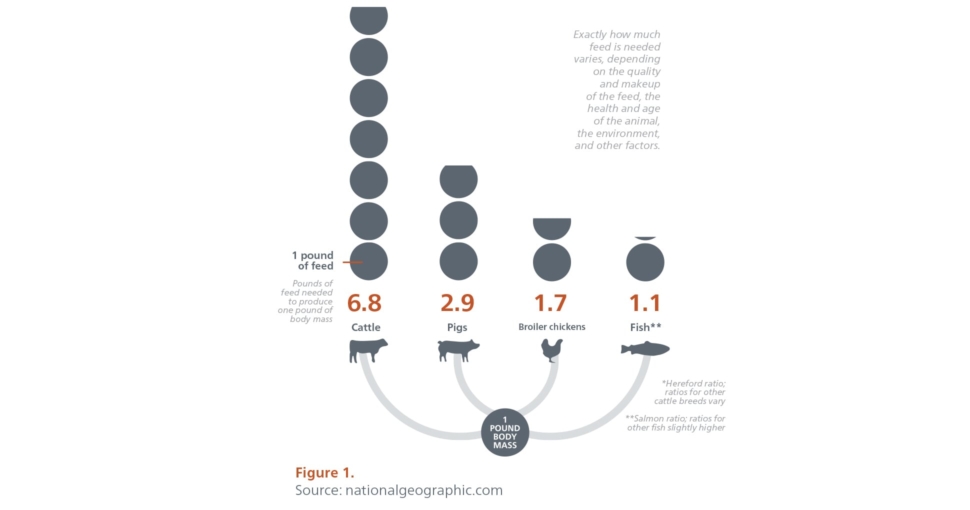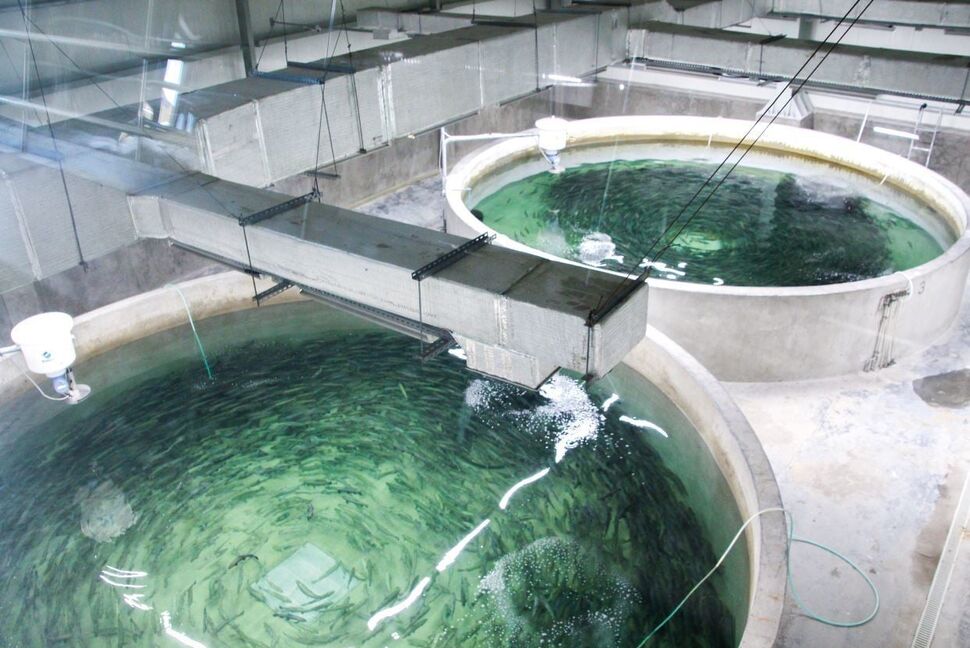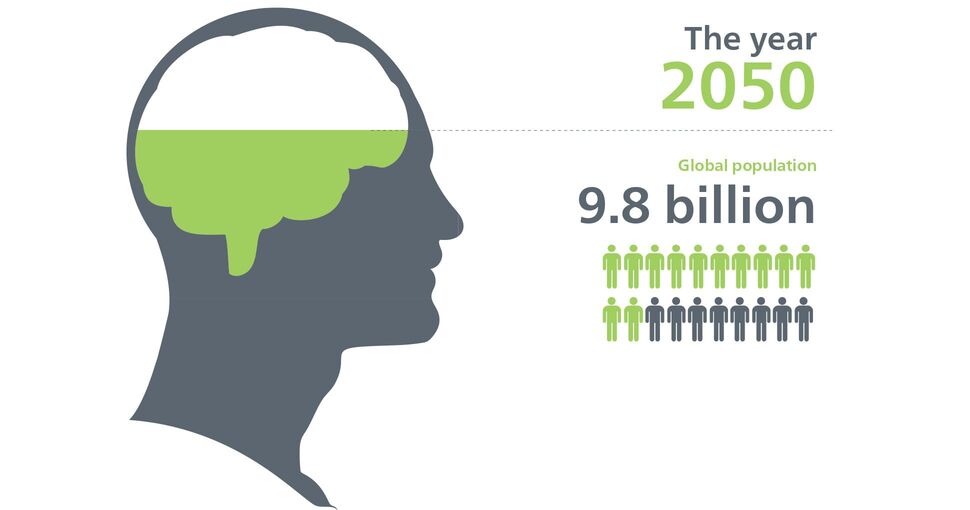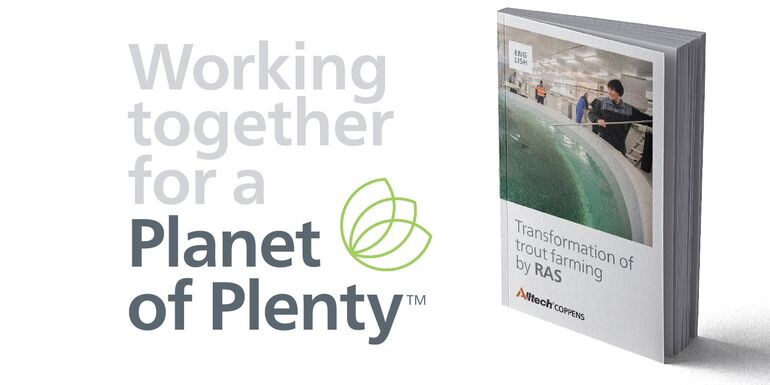
Aquaculture is globally recognised as the fastest-growing food-producing sector (FAO, 2018), and for very good reason, as it is, by far, the most efficient way to grow protein for human consumption.
Where cows need roughly six times as much feed to produce one kilogram of consumable meat, fish only need approximately one kilogram of feed for exactly the same growth.

A real milestone
Aquaculture is not only superior in its efficiency to produce high-quality protein for human consumption, but it is also one of the most technologically advanced protein-producing sectors in the world. This young industry has continuously invested in the development of new technologies, increasing production efficiency and sustainability.
With the development of recirculating aquaculture systems (RAS), a real milestone is reached in the sustainable production of fish to feed humanity on a global scale. RAS production prepares us for feeding the predicted world population of 9.8 billion people in 2050 sustainably and responsibly.

Drastically less water usage
Even though 70% of our planet’s surface is made of water, only 2.5% is freshwater, and less than half of that volume is accessible for human-kind (National Geographic, April 2020). With the human population expected to increase extensively in the upcoming decades (FAO, 2020) and our human water consumption approaching, and sometimes already surpassing, the rate at which natural water resources are replenished in some areas, we need to think ahead. There are real risks of water shortages threatening peoples’ lives and ecosystems today and in the future (Richter et al., 2020). The whole world will have to innovate to use our freshwater resources in a more responsibly and sustainably to avoid disastrous future consequences.
RAS are specifically designed to use freshwater resources as economically as possible. They do this by refreshing less than 5% of the water in their systems and consistently monitoring water quality parameters on a daily basis. This allows farmers to also increase their fish densities significantly, efficiently using every bit of space in their systems.

Minimal pollution
RAS are a highly specialised way of fish farming in which a delicate balance between fish and biofilters must be upheld. This requires skilled farm management that understands the needs of the fish and the bacteria in the filters. Specially developed RAS feeds that result in a high fish and filter performance while minimising waste products are essential in this respect.
Unique to this way of farming is the maximal control farmers have over every individual step in fish production. They can carefully choose and monitor the used water source(s), water quality parameters, fish genetics, feeds and feeding levels, but also uphold the highest standards of biosecurity, water quality and fish welfare.
As RAS monitor water quality parameters so meticulously, enabling fish to grow well and qualitatively, it will not come as a surprise that pollution is reduced to an absolute minimum. During production in RAS, the water is filtered continuously, first mechanically then biologically. The organic loads in RAS are very low already due to the use of highly digestible feeds, resulting in less faeces. The organic manure fraction that is filtered out by the mechanical filters can be used in biogas production processes or as fertiliser for crops. Second, the biological filters (natural bacteria) remove the ammonia and nitrite fraction in the water through a two-step process. The combination of these filters allows the farmer to maintain pristine water quality on both a macroscopic and chemical level.

Lower carbon footprints & fresher products
As RAS are much less dependent on huge water volumes, their geographic location becomes more flexible. This allows farmers to consider alternative farm locations that were never an option before — like cities. This flexibility also makes this form of fish farming integrable with other agriculture and aquaculture industries.
Geographic implantation of a farm can now be chosen in favour of lowering its carbon footprint. Moving the fish production closer to its feed suppliers, slaughterhouses or consumer markets, including big cities, significantly impacts on the carbon footprint of the food chain. Additionally, there are food safety benefits to moving fish production towards end consumers by providing fresher products to market.
Good water quality, high-quality feeds and good management allow the fish to feel good, stay healthy and grow to their full potential. Additionally, RAS allow the implementation of higher biosecurity levels on-farm, due to better control of every individual step in the production. Pathogens are, therefore, less likely to enter the farm, lowering the risk of disease outbreaks.
Minimal escapees
RAS are designed to provide full control over all production steps. This allows farmers to run their RAS indoors, physically separated from natural water bodies (rivers, ponds, seas). This reduces the chances of pathogens and animals like birds coming in but also avoids enabling fish to escape.
The closed nature of RAS allows these farms to be implemented anywhere in the world without threatening natural ecosystems. Fish can simply not escape accidentally from a closed building and will, therefore, not threaten to disrupt complex ecosystems in the environment, nor interbreed with local fish, spoiling their unique genetics.

